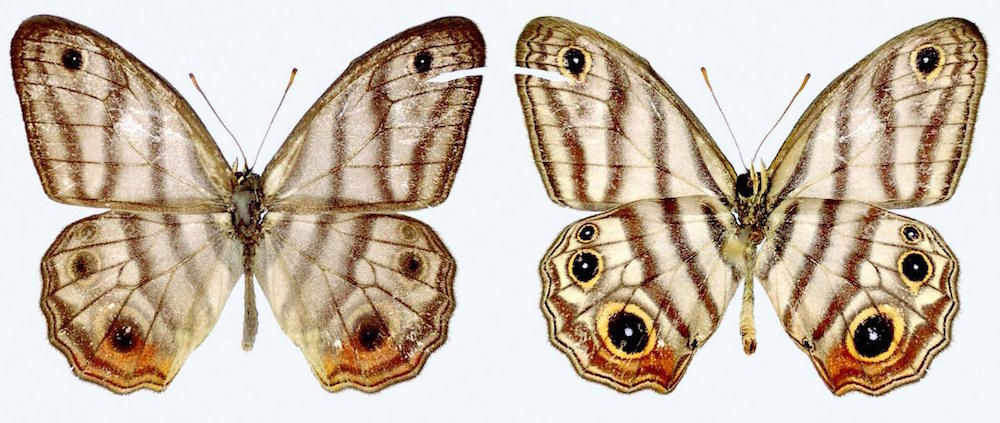Sir Butterfly! New Species Named for David Attenborough

A rare Amazonian butterfly was recently named for a man who has spent much of his time surrounded by these winged critters (as well as a whole host of other animals): Sir David Attenborough.
The black-eyed satyr (Euptychia attenboroughi) is a striking specimen that resides only within a 311-mile (500 kilometers) swath of tropical forest in the upper Amazon basin of Brazil, Colombia and Venezuela. An international team of researchers described the butterfly for the first time yesterday (Dec. 1) in the journal ZooKeys.
The butterfly's namesake, Sir David Attenborough, is best known as the narrator and host of many popular nature-themed television series, including the BBC's "Life" and "Planet Earth." He's also president of the United Kingdom's Butterfly Conservation, one of the largest insect conservation organizations in the world. [StarStruck: Species Named After Celebrities]
Attenborough's black-eyed satyr stands out from its closest relatives because of its atypical wings, which have a peculiar pattern and shape. The insect is so unlike other members of its genus, Euptychia, that the researchers at first thought the butterfly might belong to its own, previously unrecognized genus.
"It was a surprise for us that DNA data supported inclusion of this new species in the existing genus, Euptychia, since this species lacked a distinctive structural character which was considered to be shared by all members of the genus," study co-author Shinichi Nakahara, a research assistant at the Florida Museum of Natural History at the University of Florida, said in a statement.
The decision to name this new species of Amazonian butterfly for Attenborough was unanimous, said Andrew Neild, a scientific associate at the Natural History Museum, London, in the United Kingdom, and lead author of the new butterfly study. Neild noted that the diverse team of researchers that discovered the species had been "deeply influenced and inspired by Sir David's fascinating and informative documentaries.
"Other animals and plants have previously been dedicated to Sir David, but it makes us happy and proud to be the first to dedicate a butterfly species in his name," Neild said.
Sign up for the Live Science daily newsletter now
Get the world’s most fascinating discoveries delivered straight to your inbox.
What other critters are named for the man whom so many folks associate with nature programming? Well, there's Ctenocheloides attenboroughi, a species of mud-dwelling ghost shrimp that live in shallow waters off the coast of Madagascar. There's also Materpiscis attenboroughi, an extinct species of armored fish that lived approximately 385 to 359 million years ago during the late Devonian period. Attenborough helped draw attention to this ancient fish, which happens to be the oldest known fish to give birth to live young, in his 1979 BBC series "Life on Earth." The tiny pygmy locust, Electrotettix attenboroughi, is also named for Attenborough.
And don't forget the plants. The Ecuadorian tree Blakea attenboroughii is named for the famous broadcaster, as is the pitcher plant Nepenthes attenboroughii, which is endemic to Palawan Island in the Philippines.
Attenborough isn't the only nature lover to have a bunch of plants and animals named after him. (There are plenty of species named for famed naturalists Alexander von Humboldt and Charles Darwin, for example.) But other species that bear the names of well-known figures may come as more of a surprise. For instance, there is a species of lichen (Caloplaca obamae) named for President Barack Obama. Comedian Stephen Colbert has two arthropods named for him (a beetle and a spider). And a horse fly with a golden derriere is named Scaptia beyonceae after (you guessed it) Beyoncé.
Follow Elizabeth Palermo @techEpalermo. Follow Live Science @livescience, Facebook & Google+. Original article on Live Science.

Elizabeth is a former Live Science associate editor and current director of audience development at the Chamber of Commerce. She graduated with a bachelor of arts degree from George Washington University. Elizabeth has traveled throughout the Americas, studying political systems and indigenous cultures and teaching English to students of all ages.









